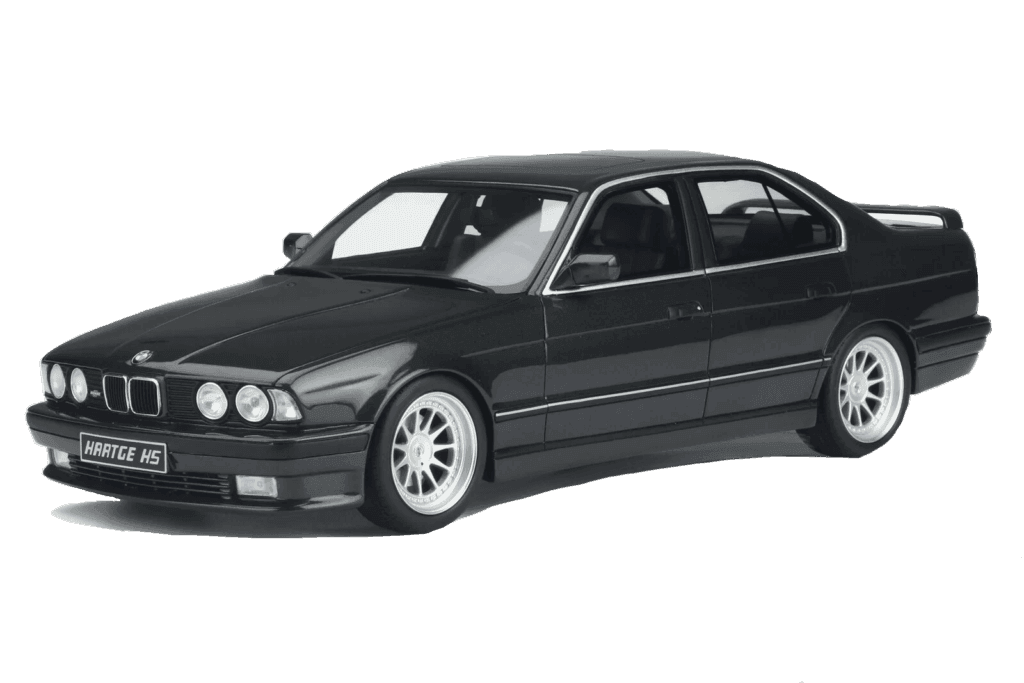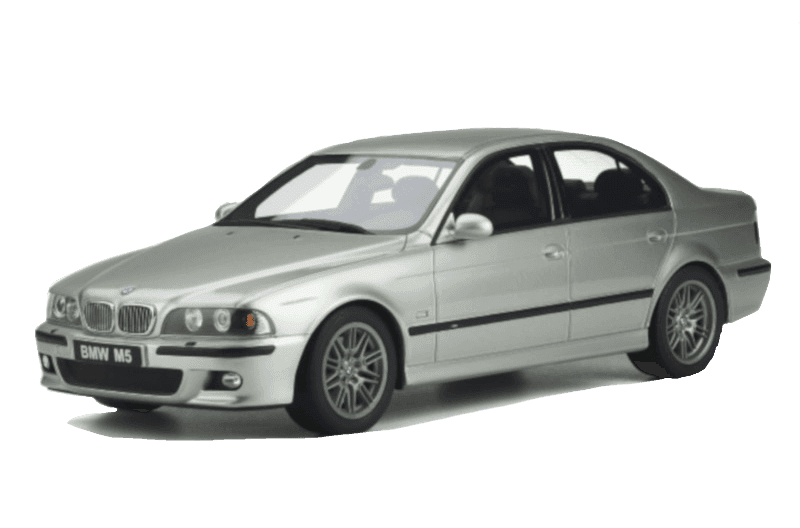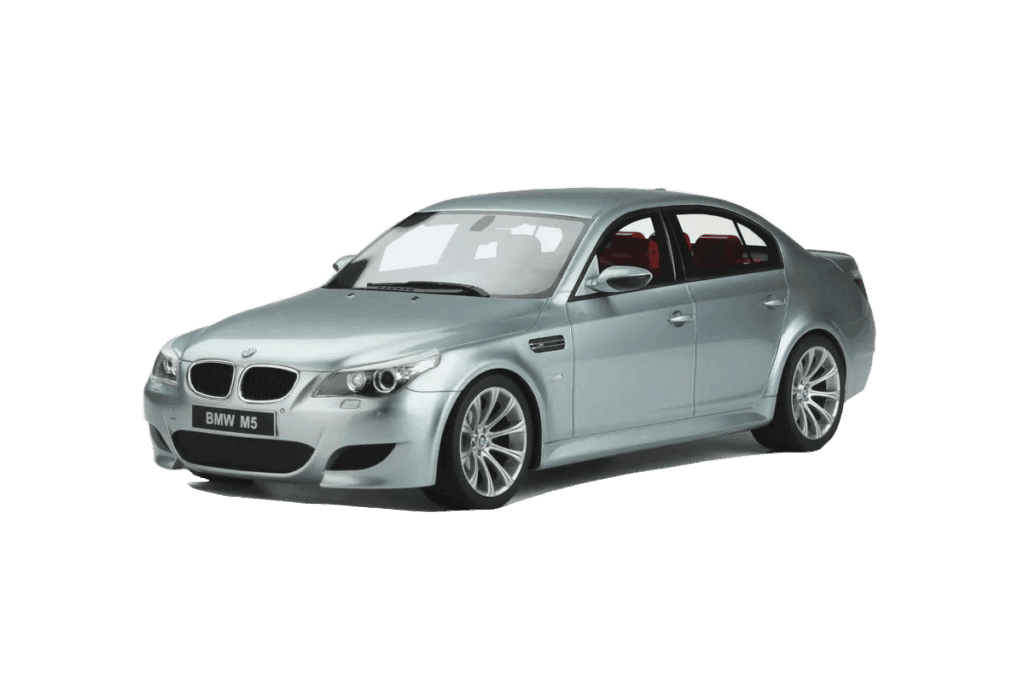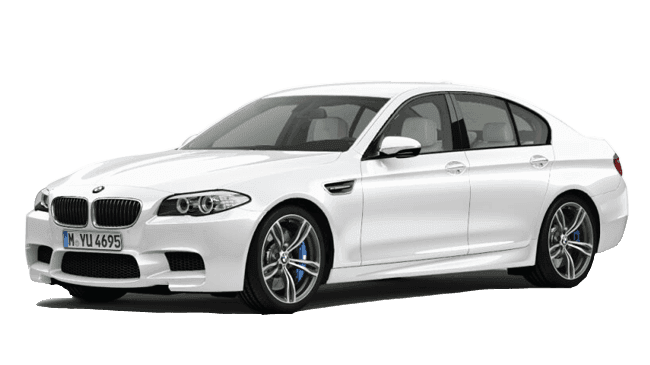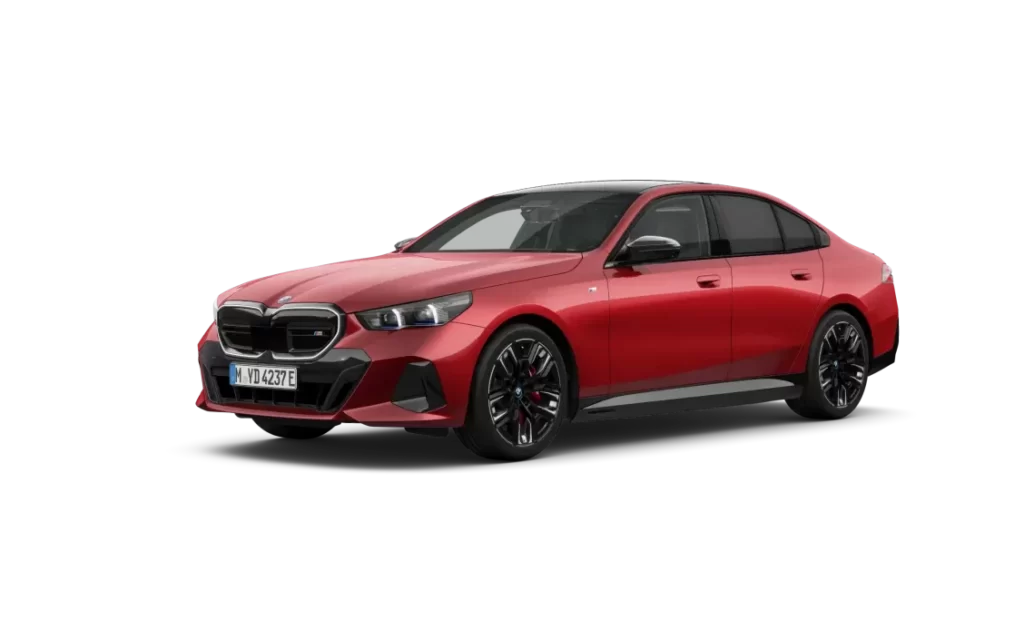Our accessories
Click on your model :
The M5 Heritage: Exciting Evolution Over the Decades
Since its appearance on the motoring scene in 1984, the BMW M5 has never ceased to fascinate car enthusiasts, establishing an unrivalled reputation as a luxury sports sedan. Through the generations, the M5 has embodied the harmonious blend of high-end sophistication, electrifying performance and innovative technological advances.
First Generation (E28) - Dawn of a Legend
The genesis of the M5 came in 1984 with the first generation, based on the BMW 5 Series E28. Equipped with an in-line six-cylinder engine, it laid the foundations for the M5 formula, combining elegance and dynamism to create a new category of sports car.
Second Generation (E34) - The Art of Performance
The M5 E34, produced from 1988 to 1995, introduced the S38 engine and marked the expansion of the range with a Touring version. Major engine upgrades, special editions and meticulous attention to detail consolidated the M5's growing reputation.
Third Generation (E39) - V8 Power
In 1998, the M5 E39 revolutionized the line by adopting a V8 engine. It dazzled the world with its modern design, impressive performance and innovative suspension, setting new standards for luxury sports sedans.
Fourth Generation (E60) - V10 Elegance
In 2004, the M5 E60 unveiled a V10 engine coupled to a 7-speed SMG transmission, offering an almost competitive driving experience. Praise for its bold design and unrivalled performance affirmed its iconic status.
Fifth Generation (F10) - Turbo Technology
The M5 F10, introduced in 2011, ushered in the era of turbocharged engines. Combining power and technology, it demonstrated the versatility of the M5 with the introduction of a dual-clutch transmission and a manual option in the USA.
Sixth Generation (F90) - The AWD Revolution
The F90 M5, based on the 5 Series G30, marked a revolution with its all-wheel drive system. Redefining expectations, it reached new heights of performance while retaining the distinctive elegance of the M5.
Through the generations, the M5 has evolved to remain true to its heritage while embracing innovation. Let's delve into the history of this rolling legend, exploring each chapter that has helped forge the BMW M5's unrivalled reputation.
First-generation M5
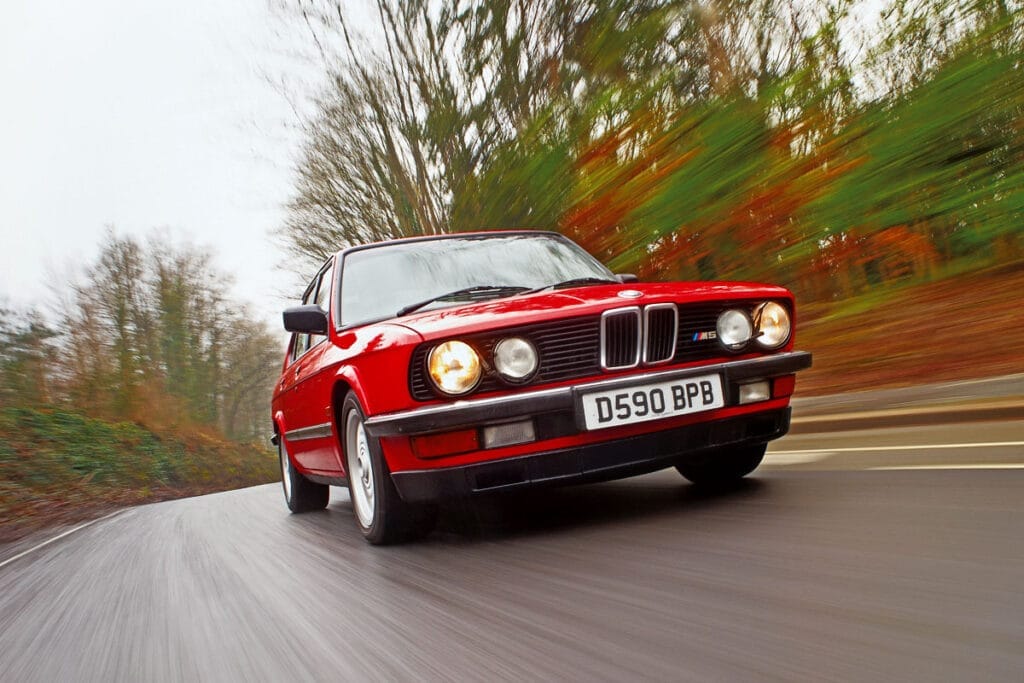
The first BMW M5, based on the 5 Series E28, was produced from October 1984 to June 1988. It made its debut at the Amsterdam Motor Show in February 1985. Based on the 535i chassis with various mechanical modifications, including the M88/3 engine (shared with the E24 M635CSi grand tourer coupé), an updated version of the engine used in the M1 sports car. At the time of its launch, the E28 M5 was the world's fastest production sedan.
The official markets for the E28 M5 were Europe, Great Britain, the USA, Canada and South Africa. European and South African cars used the M88/3 engine, rated at 210 kW (286 hp). Cars sold in the USA and Canada used a deflated version of the M88/3 called the S38B35, equipped with a catalytic converter and rated at 191 kW (256 hp). Due to prolonged production, which exceeded BMW's initial forecasts in terms of production volumes, a class-action lawsuit was launched by owners in the USA. The outcome was that owners received a voucher for 4,000 $s in 1993.
Production of the M5's North American specification began in November 1986 and ended in November 1987. With the exception of 96 cars assembled in kit form at the Rosslyn plant in South Africa, all cars were hand-assembled in Germany. Assembly took place at BMW Motorsport's Preussenstrasse plant in Munich before the summer vacations of 1986. Subsequently, production of the M5 was transferred to Daimlerstrasse in Garching, where the rest of the car was built. Production of the M5 continued until November 1988, almost a year after BMW ceased production of the regular E28 models. With a total production run of 2,241 units, the E28 M5 remains among BMW Motorsport's rarest regular production cars, after the M1 (456 units), M5 (E34) Touring (891 units) and 850CSi (1,510 units).
Second-generation M5
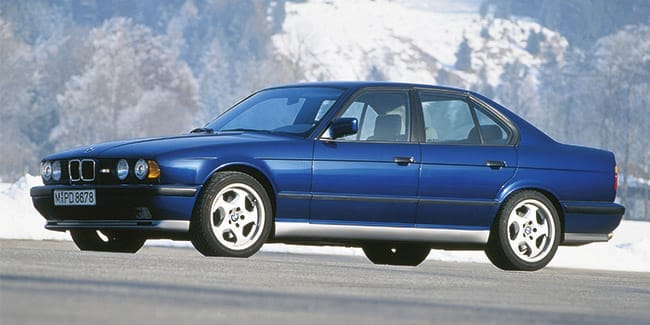
An Exceptional Chapter in History M
The first BMW M5 of the E34 generation, produced from September 1988 to August 1995, embodies a crucial stage in the evolution of high-performance sedans. Powered by the powerful S38 in-line six-cylinder engine, the M5 E34 introduced major mechanical advances, becoming the archetypal marriage of sportiness and luxury.
Exemplary craftsmanship
Produced at BMW's Dingolfing plant and meticulously hand-assembled by BMW M GmbH in Garching, the M5 E34 demonstrated exceptional craftsmanship. A total production run of 12,254 units, including sedan and Touring versions, underlined the exclusivity of this M model. Notably, the South African M5 was fully assembled in Rosslyn, using CKD kits from Germany.
Engineering Exploits: from S38B36 to S38B38
The heart of the M5 was its engine, initially equipped with the S38B36 generating 232 kW. At the end of 1991, a significant upgrade introduced the 3.8-liter S38B38, releasing 250 kW of power and improving performance. The introduction of Electronic Damper Control (EDCIII+) and a Getrag 420G 6-speed manual transmission in 1994 enhanced the driving experience.
Iconic M-System wheels
The aesthetics of the M5 were adorned with distinctive Style 20 "M-System" wheels, later evolving into the iconic "throwing stars".
Design and Aerodynamics
Aesthetically, the M5 E34 was distinguished by exclusive front and rear bumpers, as well as specific side sills, contributing to a drag coefficient of 0.32. Inside, updates included a distinctive gearshift surround and rear headrests.
Unique Special Editions
The M5 E34 was honored by several special editions such as the Cecotto, the Winkelhock, the 20 Jahre Motorsport, and a UK limited edition. Each of these special versions embodied a unique combination of performance and luxury.
Involvement in Motorsport
The M5 E34 left its mark on motor sport, notably by taking part in the Australian Bathurst 12 Hour endurance race in 1992, winning 2nd place overall.
This second part highlights the aesthetic, technical and sporting evolution of the BMW M5 E34, illustrating its legendary status in the performance sedan range.
Prototype Convertible
BMW had explored the possibility of an M5 E34 convertible, featuring an electric canvas roof, a steeper windshield and structural reinforcements. Unfortunately, this prototype was never produced in series.
Motorsport heritage
The M5 E34's impact in motorsport was particularly noteworthy, with a successful participation in the Bathurst 12 Hour endurance race in Australia, underlining its potential on the track.
#### Rare Evidence of Evolution M Division
With a total production run of 2,241 units, the M5 E34 remains a rarity, testifying to the M Division's transition to world-class performance in a luxury sedan. Its legacy lives on in the exceptional line of M5s that followed.
This third part highlights the craftsmanship, memorable special editions and enduring heritage of the BMW M5 E34, underlining its iconic status in the world of sports sedans.
Third-generation M5
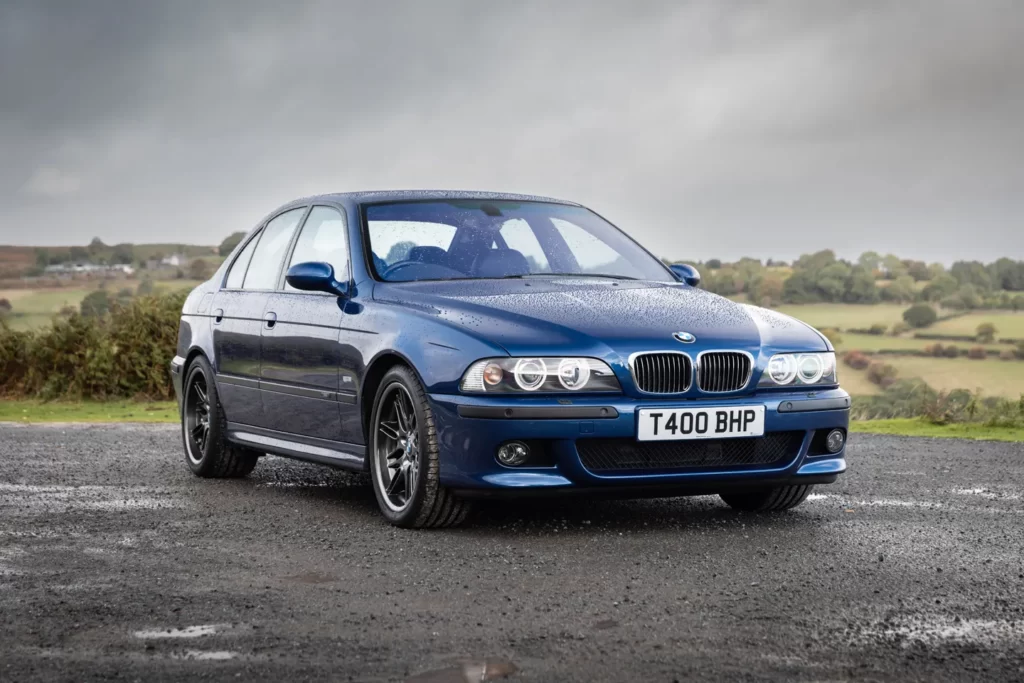
Redefining Performance with a V8 Core
Dazzling the automotive world at the 1998 Geneva Motor Show, the E39-generation BMW M5 marked a turning point by becoming the first M5 to adopt a V8 engine. Featuring aluminum front suspension components, a multi-link rear suspension and a solid V8 engine, it propelled the M5 into a new era of performance. This article explores the subtleties of the M5 E39 in detail, examining its powerful engine, advanced transmission and finely tuned chassis.
Powerful engine : BMW S62 V8
Under the hood beats the heart of the M5 E39 - the BMW S62 V8 engine. Releasing 294 kW (400 hp) at 6,600 rpm and 500 N⋅m of torque at 3,800 rpm, this powerhouse employs state-of-the-art technology such as electronically actuated individual throttle bodies, a semi-dry sump oil system and variable valve timing (double-VANOS).
Transmission and Performance :
Transmission is provided by the Getrag 420G six-speed manual gearbox, specially upgraded to handle the increased torque. The limited-slip differential with a ratio of 3.15:1 offers exceptional grip. The M5 E39 can accelerate from 0 to 97 km/h in just 4.8 seconds, with a top speed electronically limited to 250 km/h.
Chassis and suspension :
The chassis of the M5 E39 uses an aluminum MacPherson strut front suspension and a multi-link rear suspension. Specific BMW M adjustments, such as reduced ride height, thicker anti-roll bars and shock absorber tuning, ensure exceptional handling. Despite the use of ball-bearing steering, the M5 retains variable power steering for precise response.
Brakes and Design :
Two-piece floating brake discs, 345 mm in diameter at the front and 328 mm at the rear, ensure powerful braking and enhanced responsiveness. The exterior design remains faithful to the sober aesthetics of the 5 Series, while the interior boasts discreet but elegant updates.
Revisiting power and performance, the BMW M5 E39 remains a jewel in the history of sports sedans, combining sophistication and dynamism.
Fourth-generation M5
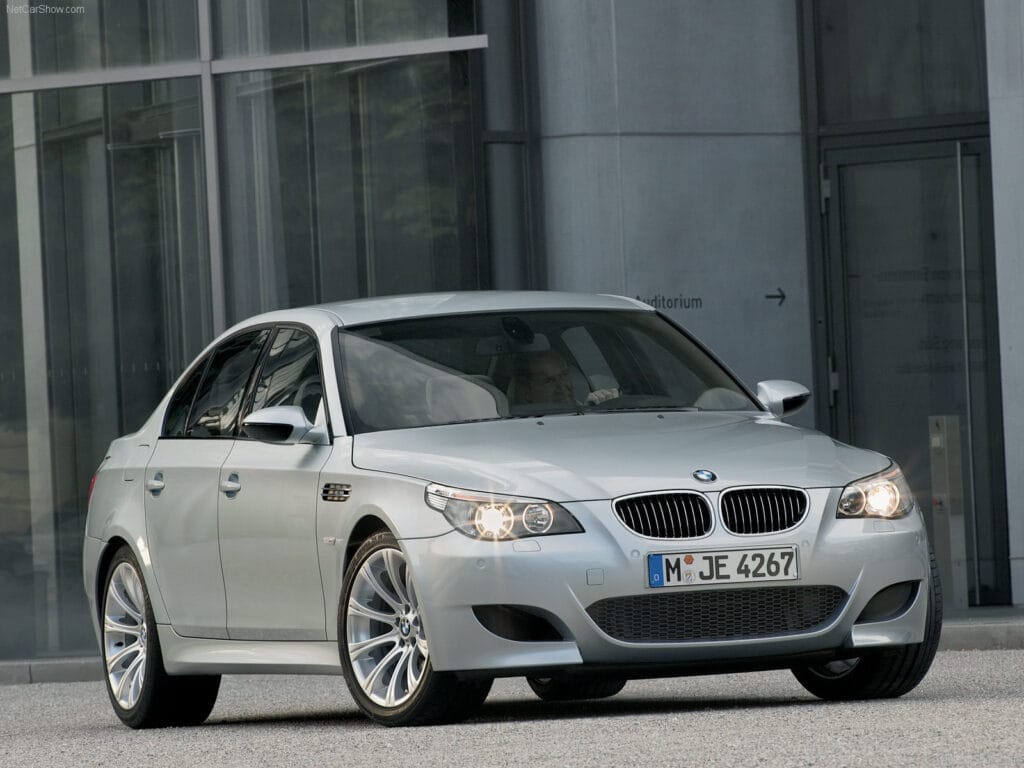
BMW M5 E60 (2004-2009): Redefining Luxury and Performance
The BMW M5 E60, unveiled at the 2004 Geneva Motor Show, marked a revolution in the world of luxury sedans. Redefining standards, it was the first production sedan to feature a V10 engine coupled to a 7-speed SMG (Sequential Manual Gearbox) transmission, directly inspired by BMW Sauber's Formula 1 program. This generation also introduced an E61 Touring version, exclusively reserved for the European market.
Design and Innovations:
The distinctive design of the M5 E60, conceived by Karl John Elmitt, featured specific elements such as widened wheel arches, a color head-up display, heated/ventilated seats and a motorized rear curtain. The 19-inch wheels and four tailpipes at the rear added to its sporty look.
Outstanding performance:
Equipped with the 5.0-liter V10 S85 engine, the M5 E60 produced 373 kW (507 PS; 500 hp) at 7,750 rpm and 520 N⋅m (384 lb⋅ft) of torque at 6,100 rpm. Performance was astounding, with acceleration from 0 to 100 km/h in 4.7 seconds and a top speed electronically limited to 250 km/h, extendable to 305 km/h with the optional M Driver pack. It also recorded a lap time of 8:13 on the Nürburgring.
SMG-III transmission and notable problems:
The M5 E60 was equipped with the 7-speed SMG-III transmission, offering rapid gear changes in milliseconds. However, criticism emerged of its less fluid low-speed behavior. In response, a six-speed manual transmission option was introduced in North America in 2006.
Mechanical Challenges:
The S85 engine was notorious for its connecting rod bearing problems, leading to potential failures. Electronic throttle actuators were also a frequent source of problems.
Production and Heritage:
Total production of the M5 E60 reached 20,589 units during its five years of production. Although lacking some of the safety features found on other 5 Series E60 models, the M5 E60 left an indelible legacy as a pioneer of performance and luxury in the sports sedan segment.
Fifth-generation M5
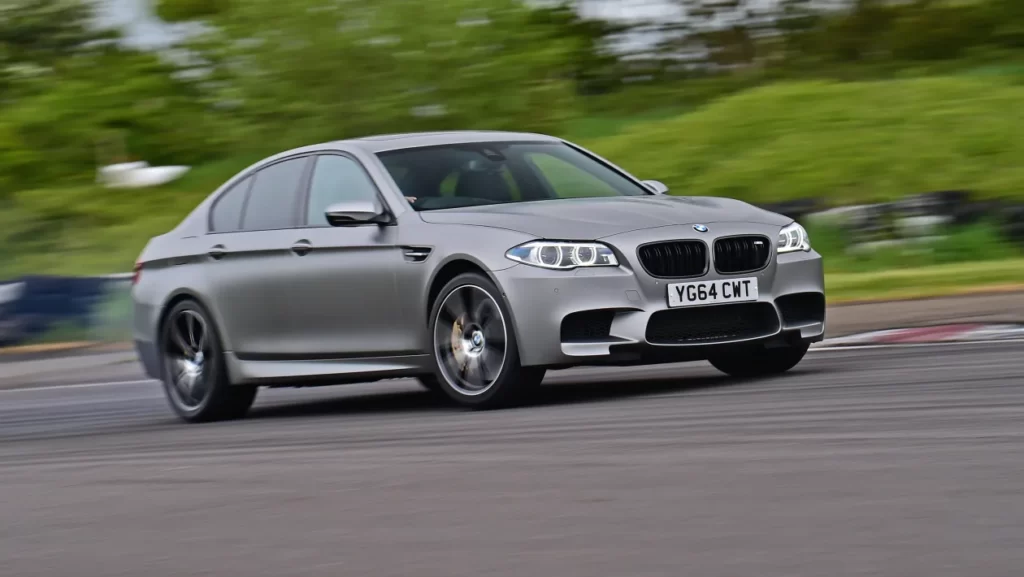
The BMW M5 F10 was unveiled at the Frankfurt Motor Show in 2011, marking a significant evolution in the M5 range. This generation is powered by a twin-turbo V8 engine, representing a first for the M5. Sales began in November 2011.
Powerful engine
The S63B44TU engine, an upgraded version of the 4.4 L twin-turbo V8, delivers an impressive 412 kW (560 PS; 553 hp) between 6,000 and 7,000 rpm. This translates into official acceleration from 0 to 100 km/h in 4.4 seconds and a top speed of 305 km/h with the optional M Driver package. The F10 M5 recorded a Nürburgring time of 7:55.
Innovative Transmission
The F10 M5 marks a first with the use of a Getrag 7DCI600 7-speed dual-clutch automatic transmission in most markets. For the USA, a 6-speed manual transmission was also available.
Weight and performance
Weighing in at 1,945 kg (4,288 lb), 90 kg (198 lb) more than its predecessor, the F10 M5 offers an exceptional driving experience. The M active differential vectors torque to the rear wheels, while optional carbon-ceramic brakes and 19- or 20-inch wheels contribute to dynamic performance.
Special Editions
In 2014, BMW introduced the BMW M5 Competition package, increasing power to 423 kW (575 PS; 567 hp) and adjusting the suspension. In 2015, power was increased to 441 kW (600 PS; 591 hp) and 700 N⋅m (516 lb⋅ft).
Performance parts M
Options include Performance M exhaust, carbon-fiber spoiler, sports steering wheel, sports pedals, side skirts, diffuser and carbon-fiber mirrors.
Special Editions
To celebrate the 30th anniversary of the BMW M5 in 2015, BMW produced 300 special models called "30 Jahre BMW M5". A pure silver edition was built in 2016, comprising 50 unique models.
Production of the F10 M5 ended in October 2016 at BMW's Dingolfing plant in Germany.
This generation of the M5 has continued to mark the constant evolution of the famous range, offering power, performance and luxury.
Sixth-generation M5
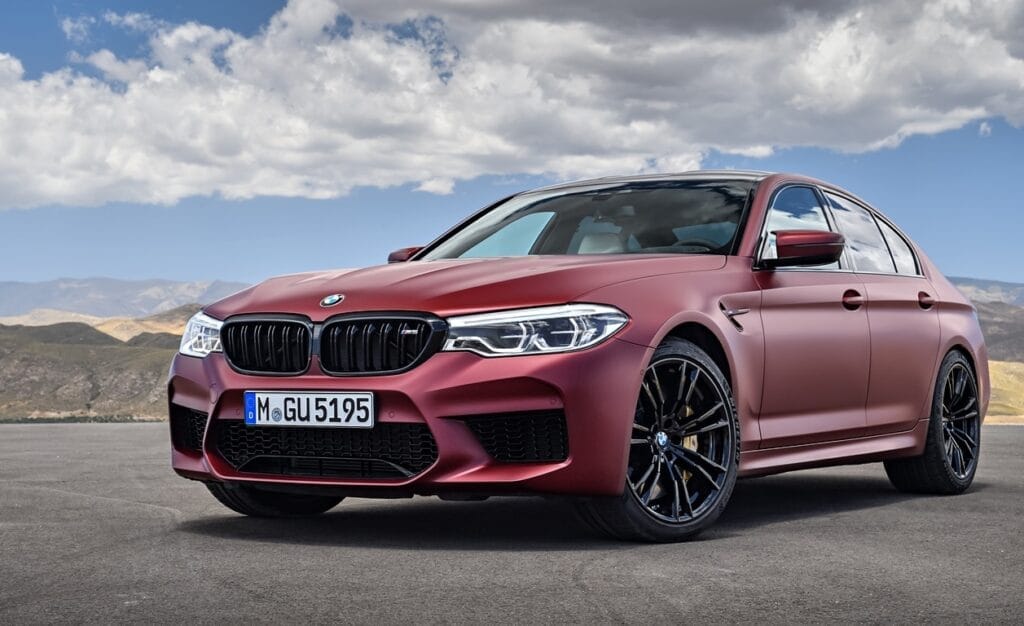
The F90 M5, launched in 2017, represents a paradigm shift for BMW's M Series, integrating all-wheel drive while retaining a high-performance focus. Developed alongside the 5 Series G30, it combines cutting-edge technology with M Series heritage.
Design and Performance :
- Designed by Seungmo Lim, the exterior features a fusion of elegance and aerodynamic efficiency, with bold lines and a distinctive grille.
- Comfort Interior:** The interior combines luxury and sportiness, with premium materials, advanced technology and distinctive M-series details.
- The F90 M5 accelerates from 0 to 100 km/h in an impressive 3.4 seconds, demonstrating its power on the road.
Engine and Transmission :
- **Powerful Heart:** Under the hood, the S63 twin-turbo V8 engine roars to life, generating an impressive 441 kW (600 hp) and 750 N⋅m of torque.
- Excellent transmission:** The ZF GA8HP75Z eight-speed automatic transmission ensures precise, rapid gear changes, contributing to the car's exceptional performance.
**Innovations and Records:**
- In a break with tradition, the F90 M5 incorporates an all-wheel drive system ("xDrive"), offering stability while preserving the iconic rear-wheel drive feel.
- Drifting records:** Notably, the F90 M5 set Guinness World Records for "Longest continuous vehicle drift" and "Longest two-vehicle drift (water-assisted)" in 2017.
Special Editions :
1. **First Edition M5 (2018):** Limited to 400 units, this special edition features distinctive dark red metallic bodywork, smoked white interior and exclusive piano black wood trim.
2. **35 Jahre M5 (2019):** Celebrating the 35th anniversary, this edition features a unique aesthetic and is limited to 350 units.
M5 Competition (2018):
- **Performance Enhanced:** The M5 Competition, launched in 2018, raises power to 460 kW (617 hp) and introduces various performance-oriented enhancements.
- Track performance:** A Nürburgring lap time of 7:35.90 underlines the track-ready capabilities of the M5 Competition.
M5 CS (2021) :
- Ultimate Performance:** The M5 CS marks the introduction of a CS version, with increased power (467 kW), substantial weight reduction and distinctive design elements.
- Carbon Fiber Integration:** Extensive use of carbon fiber in various components helps reduce weight and improve overall performance.
Facelift (2021):
- Visual Enhancements:** The 2021 facelift introduces revised headlights and taillights, offering a fresh, modern look.
- Technology Upgrade:** A 12.3-inch infotainment screen with iDrive 7.0, wireless Android Auto and advanced navigation enhance the interior experience.
The F90 M5 demonstrates BMW's commitment to innovation, combining driving pleasure, luxury and cutting-edge technology in one exhilarating package.

